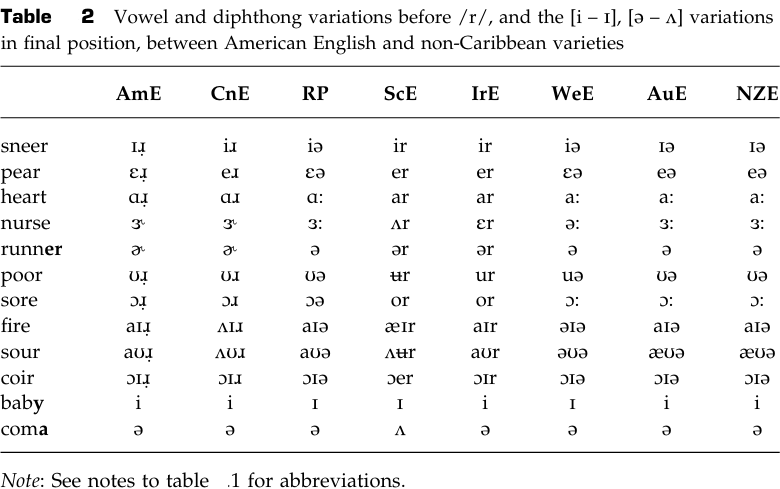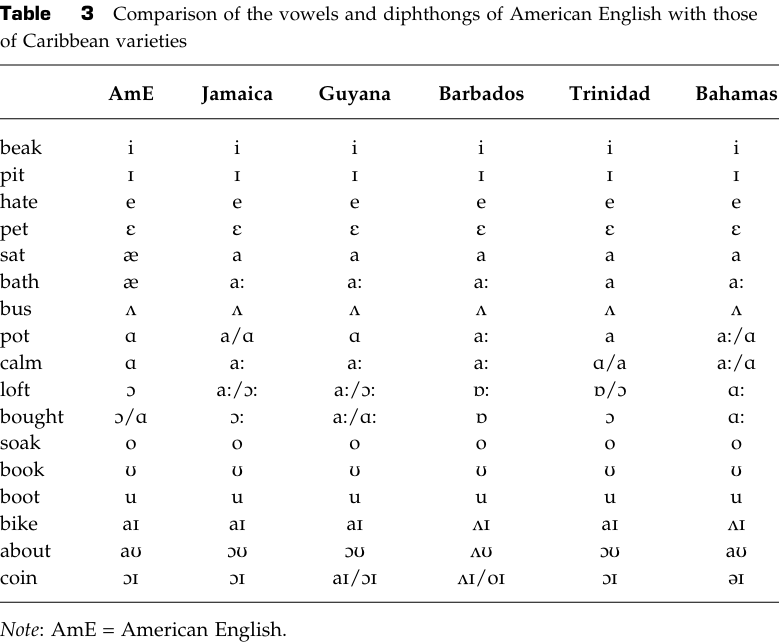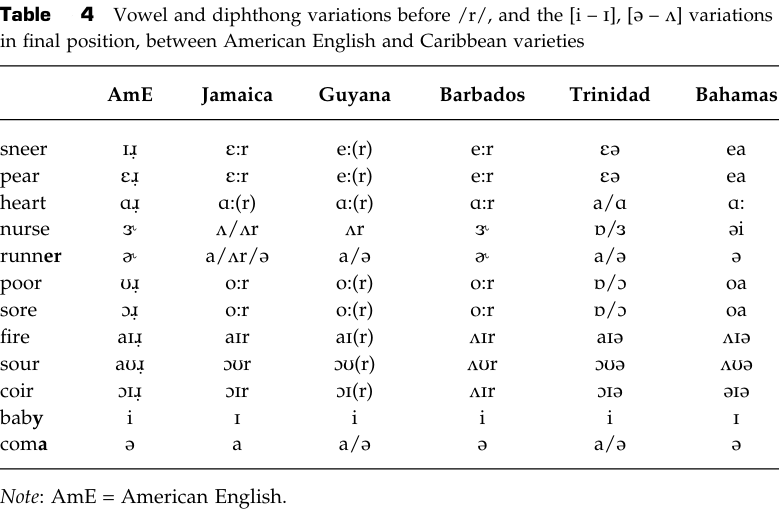


 Grammar
Grammar
 Tenses
Tenses
 Present
Present
 Past
Past
 Future
Future
 Parts Of Speech
Parts Of Speech
 Nouns
Nouns
 Verbs
Verbs
 Adverbs
Adverbs
 Adjectives
Adjectives
 Pronouns
Pronouns
 Pre Position
Pre Position
 Preposition by function
Preposition by function 
 Preposition by construction
Preposition by construction
 Conjunctions
Conjunctions
 Interjections
Interjections
 Grammar Rules
Grammar Rules
 Linguistics
Linguistics
 Semantics
Semantics
 Pragmatics
Pragmatics
 Reading Comprehension
Reading Comprehension|
Read More
Date: 2024-04-19
Date: 2024-04-30
Date: 2024-05-20
|
Non-US Varieties
In addition to the differences we observed within the United States, the non-US varieties show significant variations. Tables 1 to 4 show the differences between American English and some other Englishes.
The tables are intended to provide some basics regarding the vowel (and diphthong) variations among several varieties of English. However, they are neither comprehensive descriptions of all varieties of English, nor do they pretend to give the details of variations within a single variety.
It should also be remembered that the symbols in tables 1 to 4 are abstract in that the use of the same symbol for a sound in two or more varieties does not mean the sound is identical in different varieties. For example, when we consider AmE, CnE, RP, ScE, IrE, and WeE, we see that all have the same symbol /e/ for a word such as hate [het]. This may give the impression that the phonetic qualities are identical in all varieties. This is definitely not the case. While the vowel is definitely diphthongal in RP, its degree of diphthongization is very slight in AmE, or basically monophthongal in ScE, IrE, and WeE. The vowel /o/ is another case where the same symbol is used for different qualities; in AmE, this sound is often diphthongal, whereas in ScE, IrE, and WeE, it is monophthongal. Besides these monophthongal/diphthongal differences, there may be other variations. For example, although we use the same symbols /ε/, /æ/, and /Λ/ for the words pet [pεt], sat [sæt], and bus [bΛs], respectively, in AmE and in RP we realize that these sounds are different in the two varieties. While the first two have higher tongue position in RP than in AmE, the situation is the reverse for /Λ/, that is, it has higher tongue position in AmE than RP.




|
|
|
|
4 أسباب تجعلك تضيف الزنجبيل إلى طعامك.. تعرف عليها
|
|
|
|
|
|
|
أكبر محطة للطاقة الكهرومائية في بريطانيا تستعد للانطلاق
|
|
|
|
|
|
|
العتبة العباسية المقدسة تبحث مع العتبة الحسينية المقدسة التنسيق المشترك لإقامة حفل تخرج طلبة الجامعات
|
|
|